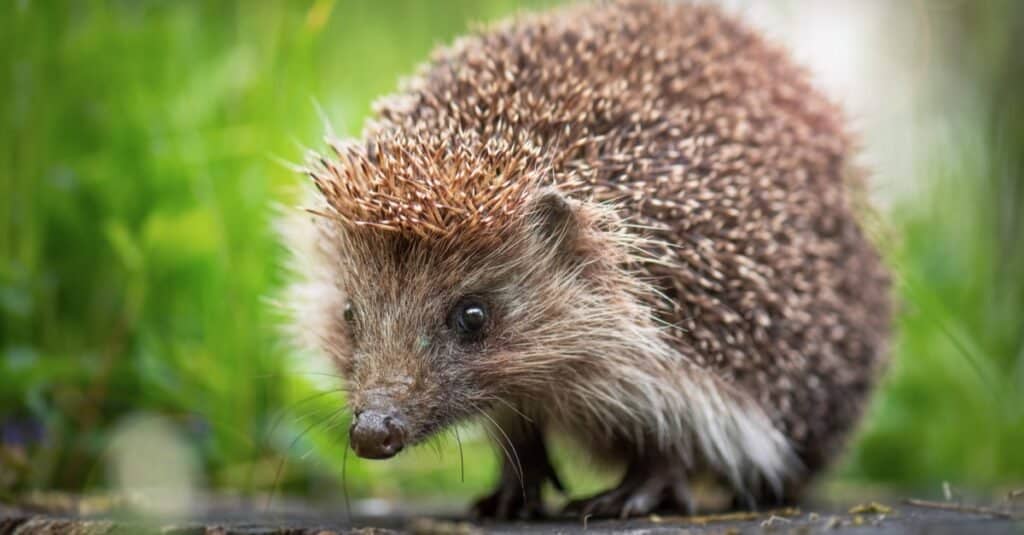Hedgehogs are wonderful pets and are growing in popularity, but many owners are uncertain of whether they can swim. It’s essential to know whenever you own a pet whether they can safely be in bodies of water. These creatures are tiny, but they are coated in air-filled prickly quills. These unique quills help them float instead of sink in the water!
Yes, hedgehogs can swim well for the most part. Yet if they can’t get out of a steep river or bank, there’s still a chance that they will get injured or even perish. In addition, they may bump their head or get seriously harmed.
Hedgehog breeds with higher swimming prowess than others are known to exist. It should be mentioned that various circumstances may make swimming harder for some people than others. The weight, size, breed, and gender of the hedgehog are some of these variables.
Do Hedgehogs Like Swimming?
Your distinctive and sociable pet’s preferences will determine whether your hedgie enjoys a cool dip in the water. Regarding preference, it’s important to note that certain hedgehogs could be scared or wary of the water due to a negative previous experience.
A hedgehog can grow anxious simply because of the unknowns in this novel circumstance. These worries tend to keep the hedgehogs on the ground. But other hedgehogs will jump in without a problem!
Your irritable pets’ laziness or general grumpiness may also be the cause of their dislike of swimming. Hedgehogs do have a tendency to be a little reserved when swimming at first. Don’t be shocked if your hedgie trembles, quivers, arches its spiny back, or poops in the water while you are monitoring. These are all pretty standard instances.

Your distinctive and sociable pet’s preferences will determine whether your hedgie enjoys a cool dip in the water.
©iStock.com/Dr-MYM
Safety Precautions
Your pet hedgehog should never be left unattended when swimming. When your pet wants to exit the water, ensure there is a slope he can use to escape. Having a floating platform is particularly convenient when your little hedgie becomes fatigued and needs to rest or warm up.
Understanding that even hedgehogs who enjoy swimming could perish if they get into difficulty is crucial. A large pool or outdoor water feature with higher walls makes it harder for your cute little hedgehog to crawl out when ready.
If a hedgehog is frolicking outside during the night, it is important to cover any pools or other water sources. This could aid in avoiding any mishaps. However, while swimming outside, a hedgehog may also run the risk of being attacked by local animals.
Upon sensing danger, hedgehogs will stiffen and flip over. Their air-filled quills resist this attempt when submerged in water. Even hedgehogs who are the best swimmers can rapidly become exhausted from this activity. They will eventually get too worn out and weary, and if this happens without careful supervision, it might be quite harmful to your pet.
Benefits of Hedgehogs Swimming
A few benefits come with letting your pet hedgehog swim. First off, if you give your pet enough time to grow used to the water and always keep an eye on them when in or close to any water source, swimming may be enjoyable for both of you.
Your small pet will get plenty of exercise by swimming. Hedgehogs may not be able to participate in yoga or spin courses, but the majority will benefit greatly from occasional swimming.
Many hedgehog owners give their pets diets with an excessive amount of fat. Without sufficient regular activity, those calories will accumulate, causing your bored and unfit hedgie pal to put on weight and possibly even develop morbid obesity. It’s never smart for a little animal to be overweight.
It can be a great choice to incorporate swimming into their regimen on a weekly or biweekly basis to promote mobility and activity. In addition, a hedgehog may stay healthy and strong by participating in regular activity and eating a balanced, low-fat diet.
Like other pets, hedgehogs require mental stimulation as well. When living in the wild, hedgehogs are inherently wary. But, if a hedgie is maintained as a pet, this urge may weaken, which could lead to boredom and restlessness in your pet. Swimming can provide your pet hedgie with enough cerebral activity to keep them from becoming bored or lazy.

Your small pet will get plenty of exercise by swimming!
©Elijus3000/Shutterstock.com
Fun Facts About Hedgehogs
Learn the most amazing facts about hedgehogs, like their charming pig-like nose and their innate capacity to repel snake venom! We’ve included some of our favorite interesting facts about these prickly critters!
1. Multiple Hedgehogs are Called an Array
There won’t be many major hedgehog reunions, so be prepared. Hedgehogs are notorious loners who only socialize during mating. The male hedgehog, or boar, will continually surround the female hedgehog, or sow, in a mating ritual.
The sow gives birth to four to six hoglets a month after mating after the boar promptly departs. The young hoglets don’t dwell with the sow for long; they are weaned and left to live on their own at around four to six weeks old.
2. They’re Ancient Animals
Scientists from Spain made the discovery of the petrified bones of a hedgehog-related mammal in 2015. This discovery was particularly significant because it marked the first time that researchers had seen spine-like features in Mesozoic mammals. Scientists have compared the 125-million-year-old fossil to spiny mice and hedgehogs due to the small size of the animal and the presence of keratin fibers.
3. Not All Hedgies Hibernate
Certain kinds of hedgehogs must hibernate in order to survive the harsh winters because they can be found in a range of climates around the world. In desert areas, hedgehogs may spend the entire year awake or go through brief periods of torpor.
Hedgehogs can spend up to six months in hibernation in the harshest climates; they eat before going into hibernation and store enough fat to endure for many weeks. Hedgehogs awaken at this hour, go on the hunt for food, and then go back to sleep. Because they can change their cycle, hedgehogs may not hibernate at all in hotter climates or during particularly mild winters.
4. Hedgehogs Are Immune to Snake Venom!
European hedgehogs have blood proteins that counteract and offer some degree of natural defense to snake venom. Pigs, honey badgers, and mongooses are a few more creatures that have evolved convergently to withstand snake venom.
Hedgehogs can consume venomous snakes and even tolerate their bites, demonstrating the importance of their venom tolerance. Nevertheless, the immunity is not perfect, and the hedgehog could still die from the bite if it comes in contact with a more dangerous snake.

Hedgehogs have blood proteins that counteract and offer some degree of natural defense to snake venom.
©DenisNata/Shutterstock.com
5. They Can Inflate!
These creatures are susceptible to a condition known as “balloon syndrome,” in which gas becomes stuck under their skin and causes them to inflate, occasionally growing as large as a beach ball. The sole cure is making an incision in the skin to expel the trapped gas. However, no one is certain why this occurs, even though it’s assumed to be caused by an injury.
6. Hedgehogs Have Around 44 Teeth
Even at three weeks old, a hedgehog’s teeth have finished growing. Hedgehogs, which are monyphyodonts, only develop one set of teeth during the course of their lifespan; once a tooth is lost, it will never regrow.
So, maintaining good oral health is crucial if you are interested in keeping hedgehogs as pets.
The finest method for maintaining their sparkling whites is typically advised—regularly brushing their teeth with a Q-tip.
7. Hedgehogs Have Been Used in Cooking
Hedgehogs were once consumed by some wandering people for food, which may sound like it’s one of the more implausible hedgehog facts. They baked the hogs over a fire after rolling them in clay to cook them. The hair and spines would fall out once the clay had been removed after cooking.
Even a meal of hedgehogs served with almonds was included in experimental chef John Farley’s 1783 cookbook The London Art of Cookery.
Hedgehog meat is said to taste similar to pork, with a stronger taste, and is quite chewy.
The photo featured at the top of this post is © iStock.com/serikbaib
Thank you for reading! Have some feedback for us? Contact the AZ Animals editorial team.







